Cheekbone reduction, also known as zygoma reduction, has become popular in Asian and East Asian countries.
It reshapes the cheekbones by reducing the height and width of the cheekbone to achieve a sculpted look with an oval or heart-shaped face. The appropriate cheekbone volume gives the face vitality and a youthful look. The amount of reduction and zygoma shape should be discussed thoroughly by the surgeon and patient.
Surgery Duration
Approx. 1-1.5 hours
Hospitalization
No
Stitches Removal
None / after 14 days
Anesthesia
General
Recovery Period
7 Days
3D Zygoma Reduction

3D zygoma reduction is a complex solution for prominent cheekbones.
By reducing the total width, rotating the front cheekbone, and pushing in the side and 45-degree cheekbone, the face will be more three-dimensional and slimmer.
- Side Zygomatic Arch
- 45-Degree Zygoma
- Front Zygoma

Why CDU 3D Zygoma Reduction?

1. Minimal incisions and a minimized surgical area
For convenient access to each part of the zygoma, 4~5mm of incisions are made inside the mouth and at the sideburns to minimize the surgical area.
This provides a precise surgical fixation for stability and prevents sagging skin as the surgical areas are narrowed. As the wound is closed layer by layer, the quality of the scar is great and fades away over time.

2. Definite double fixation
Fixing the zygomatic body and arch at two different points provides stability and safety to ensure the proper healing process of the bone and prevents skin sagging.
- Fixation at the front zygomatic body
- Fixation at the side zygomatic arch
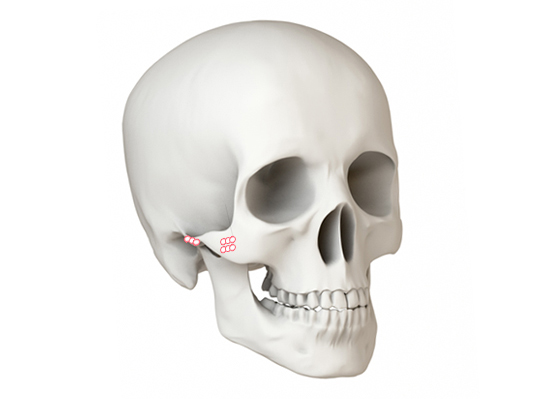
3. Rotational reduction
- Conventional Method
The conventional method of zygoma reduction simply cuts a decent amount of bone and fixes it directly to the facial bone. Because the zygomatic bone remains wide even after surgery, it can cause complications.
- Rotational Reduction
Through rotational reduction, a fragment of the bone is rotated and fixed inward, giving a balanced definition and more reduction effect.
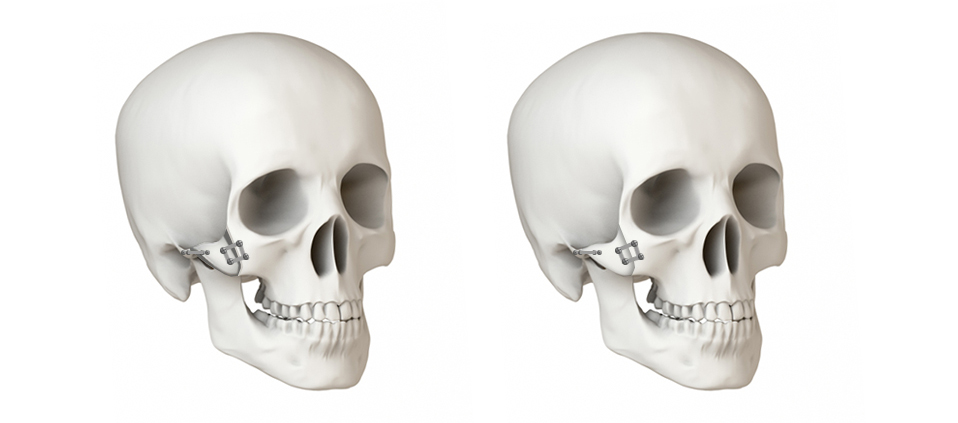
Surgery Process

1. Front Zygoma
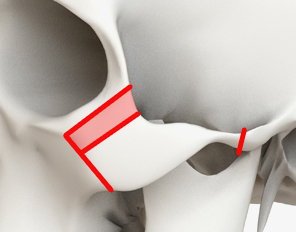
The front zygomatic body is cut in an L-shape, along with the side zygomatic arches.
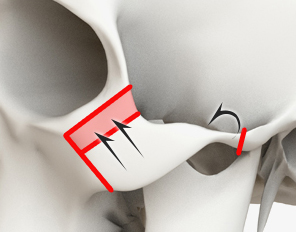
The desired amount of bone is removed and the remainder pushed in to reposition the bone.
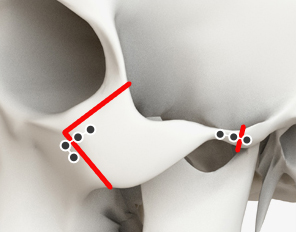
The repositioned bone is securely fixed.
2. Side Zygomatic Arch
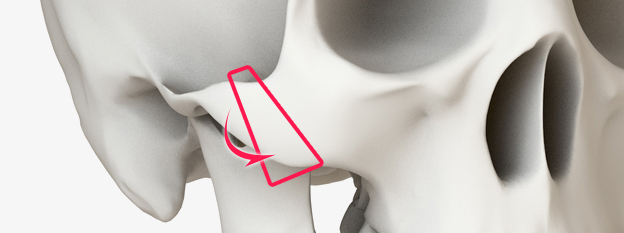
Instead of using L-type osteotomy, the front zygoma and side zygomatic arch are cut in a trapezoid shape.
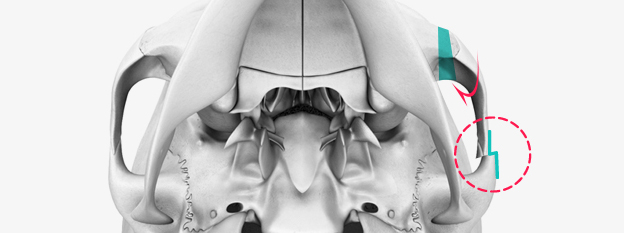
The remaining bone is rotated in and securely fixed at the new position.
3. 45-Degree Zygoma
When reduction surgery for the 45-degree zygoma is not properly performed, there is a possibility of skin sagging. When the 45-degree zygoma is overly developed, it can give a dowdy or mean appearance.
Therefore, reshaping the 45-degree zygoma is important to achieve a smoother and more sophisticated look.
Recommended For

- Unwanted masculine or fierce impression due to prominent cheekbones.
- Prominent cheekbones which reduce the smoothness of the face contours.
- Broad face.
- Asymmetric cheekbones.
- Flat facial structure.

